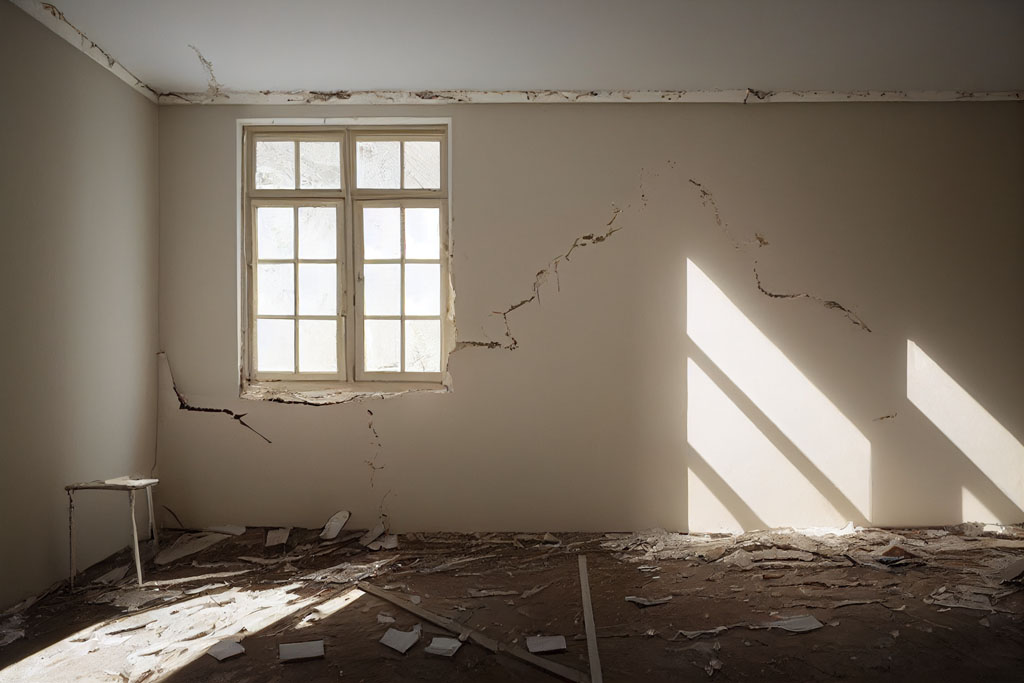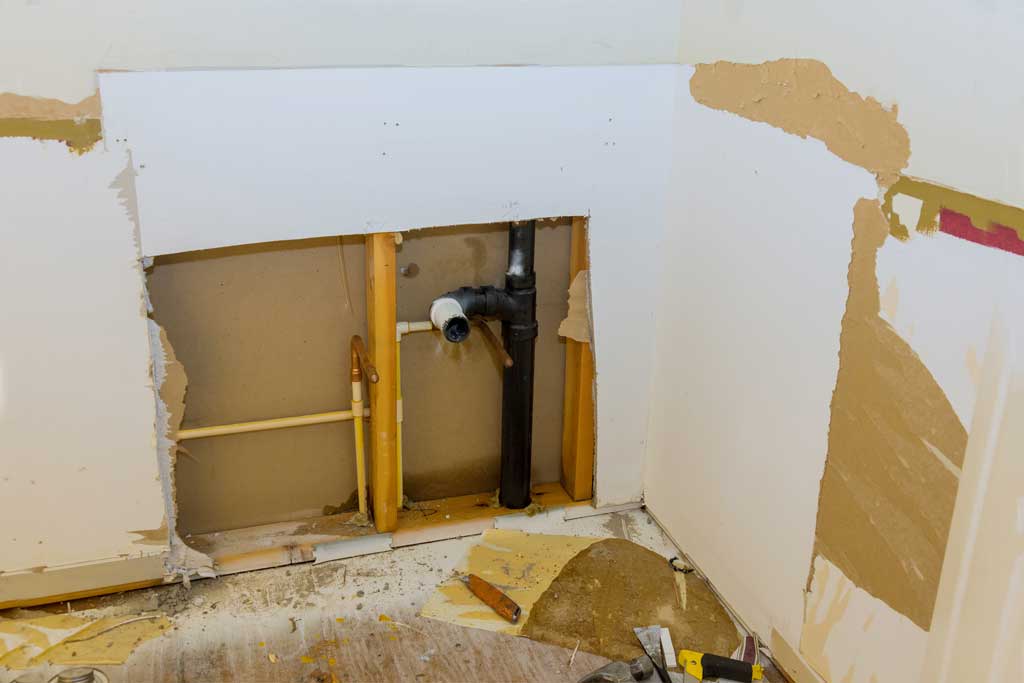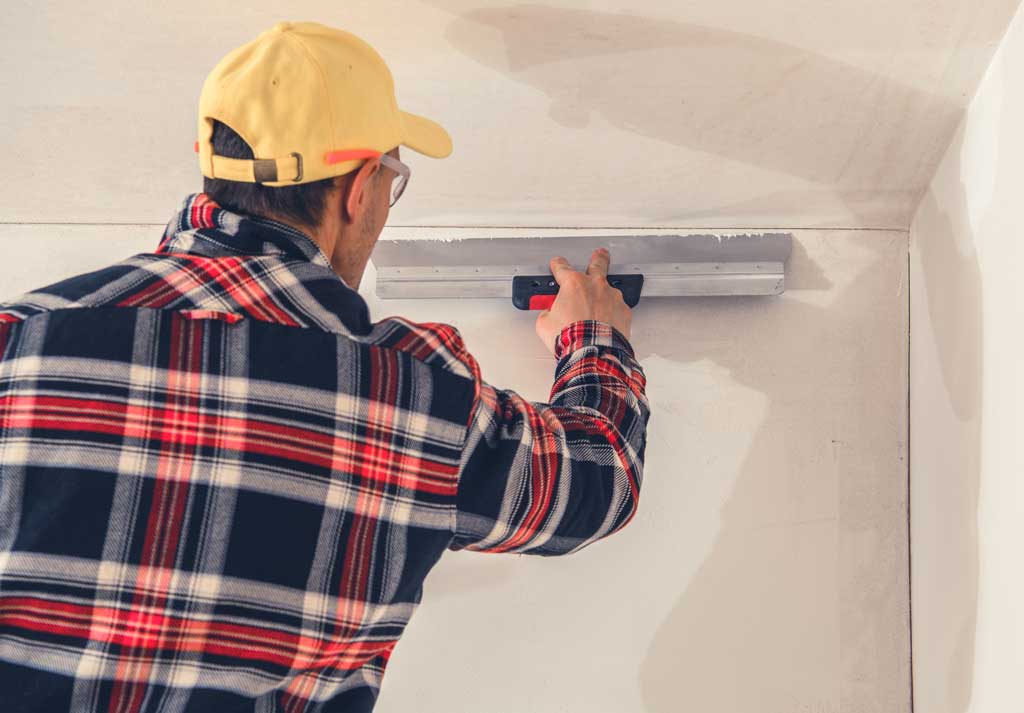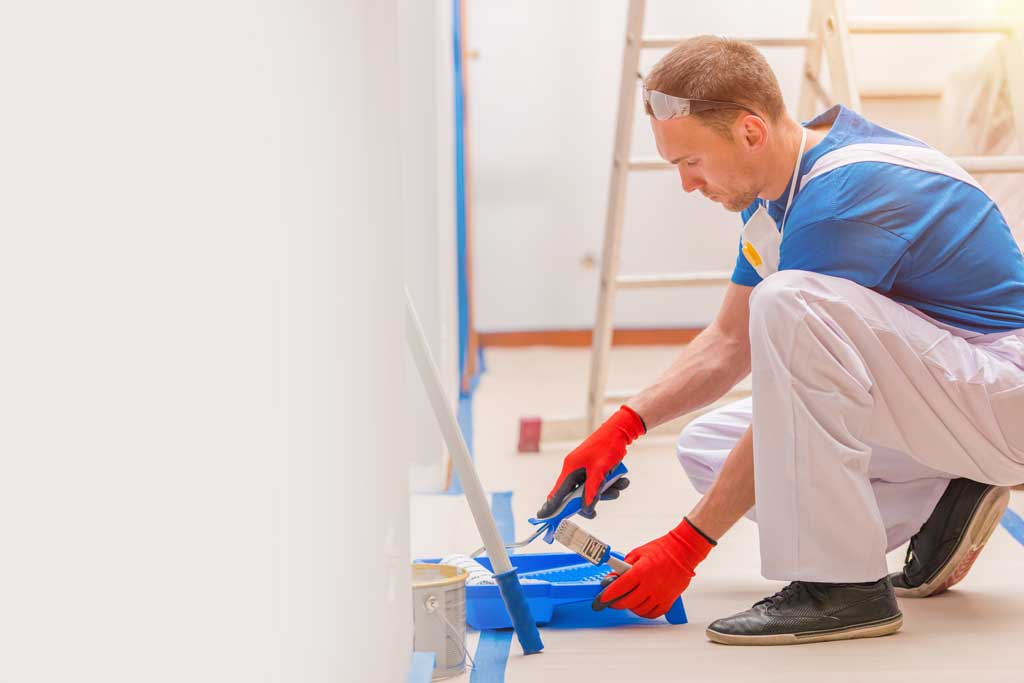The Process of Replacing Drywall In Your Home
Jump to Section

What Causes Drywall Damage?
Drywall is a strong and fire-resistant material but it can be damaged by minor hits or sustain major water damage. There are many ways for drywall to be damaged and some of it can easily be repaired such as: nail holes, dents, gouges, and minor cracks. However drywall or sections of drywall will have to be replaced if any of the following occur.
Drywall that is still in good condition but stained by a water leak can simply be repainted
A couple nail holes can re a DIY project but multiple holes may need the section to be cut out and replaced
Add a doorstop to prevent damage to wall
An unlevel house can cause cracks and bulging in drywall
Accidents happen when moving furniture, kids playing, stumbling
Drywall will need to be cut and removed to perform electrical or plumbing repairs
Over time and also due to settling, nails and drywall tape may protrude and become unsightly

Water Damage Repair
Water damage can be caused by leaking pipes, overflowing toilets, busted water heater, leaky roof or a major flood. The drywall will need to be immediately removed before it causes further damage. Drywall is porous and will retain water which can lead to dangerous mold growth and bring rot to the wooden frame structure behind the drywall. New drywall can be installed after the water leak source has been corrected, the area has fully dried, and any other damage to the substructure has been repaired.

House Settling Repairs
When a house settles or suffers from foundation damage it can lead to stress cracks, bulging, and nail pops. The best thing to do in this case is to have your house leveled first before repairing the drywall. If you install new drywall first and then level the house; you will most likely see new cracks emerge as the house is raised. Hire a crew of handymen to come in for drywall installation after the house is leveled and settled. Some stress cracks may actually come back together and need a simple patch job. Other cracks might get worse, some areas might break off, and bulging drywall may not go back to its original shape. The handymen will determine what drywall can stay and what needs to be removed and replaced.

Electrical and Plumbing Repairs
Unfortunately electrical wiring and plumbing pipes are hidden behind drywall and it will need to be cut into to have access to the wires or pipes. The electrician or plumber will use a saw to make a clean cut to access what they need to reach. A drywall patch job can be performed if the opening they create is small. If it’s a major tearout then a sheet of drywall may need to be replaced.

Ceiling Repair
Ceilings are also made of drywall and can be damaged just like walls. However a stress crack in a ceiling is also being affected by gravity and may cause the crack to become a hanging gap. A water leak will make a hole in the ceiling drywall and can become larger depending how long the leak lasts. The water will also cause peeling if there is a textured plaster on the drywall. Lastly, some attics are not finished with a solid floor and a family member or repairman may accidentally step in the wrong place and send their foot right through the ceiling. No matter how your ceiling was damaged; it will receive the same repair process as walls.

Seamless Texture Matching
Some homes have a flat, smooth drywall surface but others have a textured surface. Most people have seen the very popular texture called Popcorn. Popcorn texture feels and looks like tiny little bumps all over the drywall. It was originally popular in the 70s for its sound dampening quality but it is still used today. There are other texture patterns such as: Knockdown, Slap Brush, Orange Peel, Slap Brush Knockdown, Sand Swirl, Comb, and Venetian Finish. When repairs are done on textured walls and ceilings; the handyman must be able to match the texture seamlessly so that the repair will be hidden. You don’t want people to be able to see a patch job or a new sheet of drywall. You should hire an experienced drywall contractor instead of trying to do the job yourself because they will be able to match textures.

Finish by Painting
After the new drywall has been installed, taped and floated, and sanded; it will need to be painted. Whoever you hired to work on the drywall will also be the one to handle painting the new section and finalize the job. They can match the paint color so it will blend in with the rest of the wall or ceiling. Or they can paint the entire room a different color if you’re in the mood for a change and want a spruce up.
Contact Alamo City Handymen if you’re in need of drywall repair/replacement, texture matching, and painting. The greater San Antonio area homeowners have been hiring Alamo City Handymen for all types of service such as carpentry, flooring, electrical, plumbing, interior painting, exterior painting, siding, and many more services both big and small. Call us or visit our website to schedule a free inspection and quote today!

